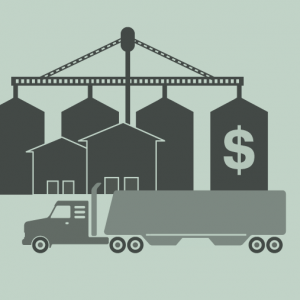What does regenerative agriculture mean?
If you’re like most farmers, you’re probably hearing a lot about regenerative agriculture. But you’re wondering, what does it mean? And what’s all the hype about?
A Google search for regenerative agriculture returns lots of definitions that include a wide range of practices and concepts. They include everything from soil health to animal welfare to climate change. And from carbon sequestration to aquaculture to food justice.
Here’s the fact of the matter: there’s currently no single accepted meaning for regenerative agriculture. Not in the government, not in the farming industry, and not in the commercial sector. So, if you’re an organic farmer considering regenerative organic agriculture, this definition from A Greener World can be a good place to start:
Regenerative Agriculture: A set of planned agricultural practices that ensure the holding is not depleted by agriculture practices, and over time the soil, water, air, and biodiversity are improved or maintained to the greatest extent possible.
For a fuller definition, we can look to Terra Genesis:
- Regenerative Agriculture is a system of farming principles and practices that increases biodiversity, enriches soils, improves watersheds, and enhances ecosystem services.
- Regenerative Agriculture aims to capture carbon in soil and aboveground biomass, reversing current global trends of atmospheric accumulation.
- At the same time, it offers increased yields, resilience to climate instability, and higher health and vitality for farming and ranching communities.
- The system draws from decades of scientific and applied research by the global communities of organic farming, agroecology, Holistic Management, and agroforestry.
You can also find explanations of regenerative agriculture at Rodale and General Mills.
The purpose and value of regenerative organic farming
Regenerative agriculture pushes the boundaries of soil health and sustainability. And there’s a variety of field management practices that farmers can leverage to achieve its goals.
It’s worth calling out that most certified organic farmers in the U.S. already implement many of the land management practices encouraged by regenerative farming. But while the reasons for employing these practices include increasing profitability for family farms, there is a larger overall purpose. And that is to improve and restore the health of your soils, benefitting not only your farming operation but also improving the entire planet for many generations to come.
In terms of soil health, regenerative organic farming includes:
Minimized soil disturbance. Regenerative agriculture aims to preserve and protect micro-organisms living in the soil. As a result, it promotes reduced or no tillage and the avoidance of synthetic pesticides and fertilizers.
Maximized crop diversity. Regenerative agriculture (as well as organic agriculture) advocates for rotations designed to capture the benefits of crop diversity. This can include a well-planned succession of crops such that the first one provides valuable nutritional benefits to the next one. In addition to increased fertility, this will reduce the buildup of weeds, pests, and diseases so that synthetic herbicides, fungicides, and pesticides can be avoided. Intercropping is another approach that can create diversity in the field’s ecosystem.
Optimized soil protection. Cover crops nurture the soil by protecting it from rain, sun, and other damaging conditions that can lead to erosion. In addition, they maintain living plants and roots for as much of the year as possible to support beneficial soil microbial communities. They often provide green fertility for future cash crops as well.
Is getting certified for regenerative agriculture worth it?
In response to consumer demand, more and more food companies are purchasing organic crops grown following regenerative practices. And some of them are willing to pay a premium on top of the already well-established organic grain price premiums.
Farmers have options if they want to obtain a regenerative certification. Organic farms can receive regenerative certification from A Greener World or they can become Regenerative Organic Certified (ROC) through a program overseen by the nonprofit Regenerative Organic Alliance.
But keep this in mind: unlike organic certification, regenerative certifications are not administered or enforced by the USDA. There is currently no established market for regenerative organic certified crops. So farmers seeking economic benefits will often have to find their own markets for regenerative certified crops and/or look to other options such as getting paid for carbon sequestration.

